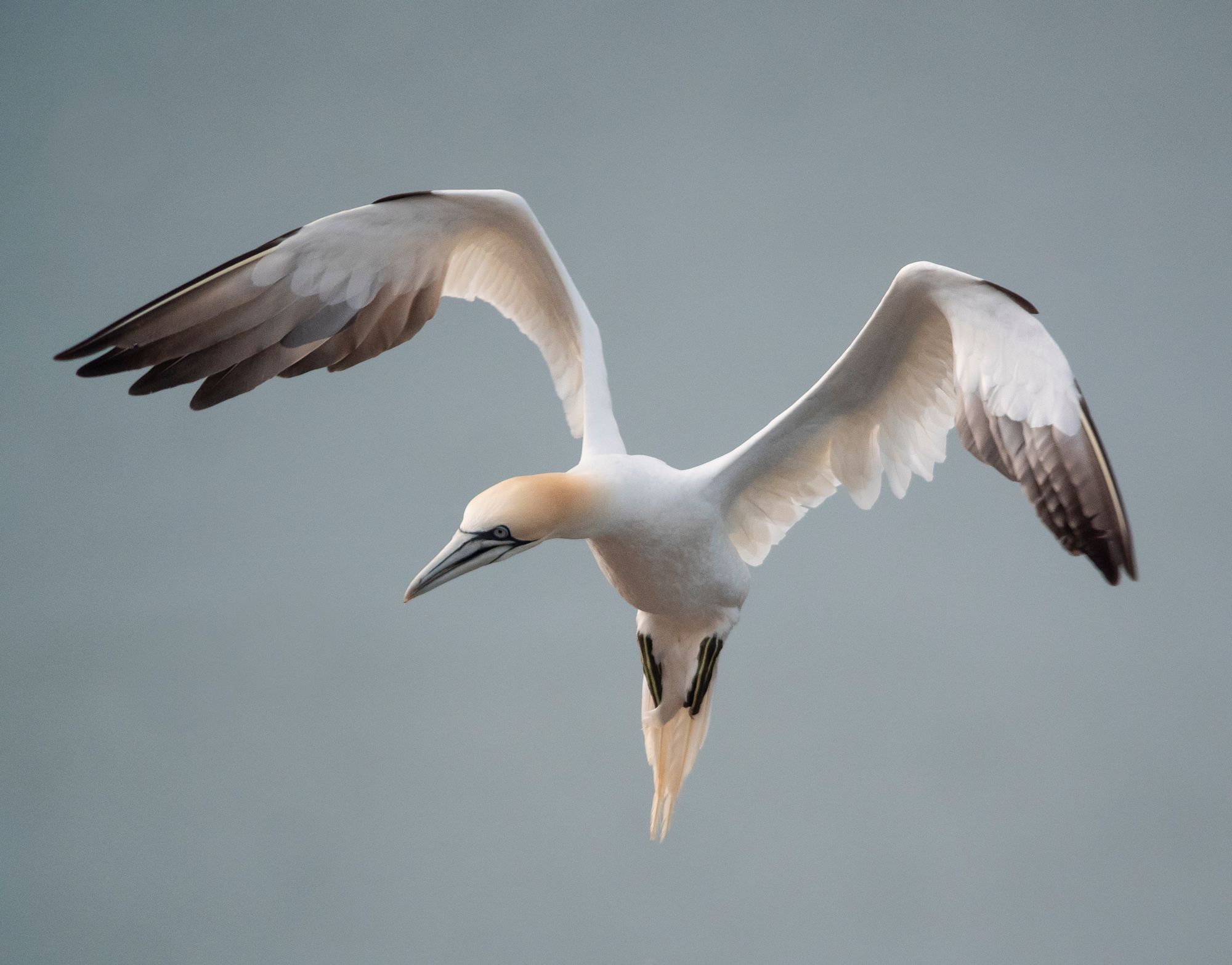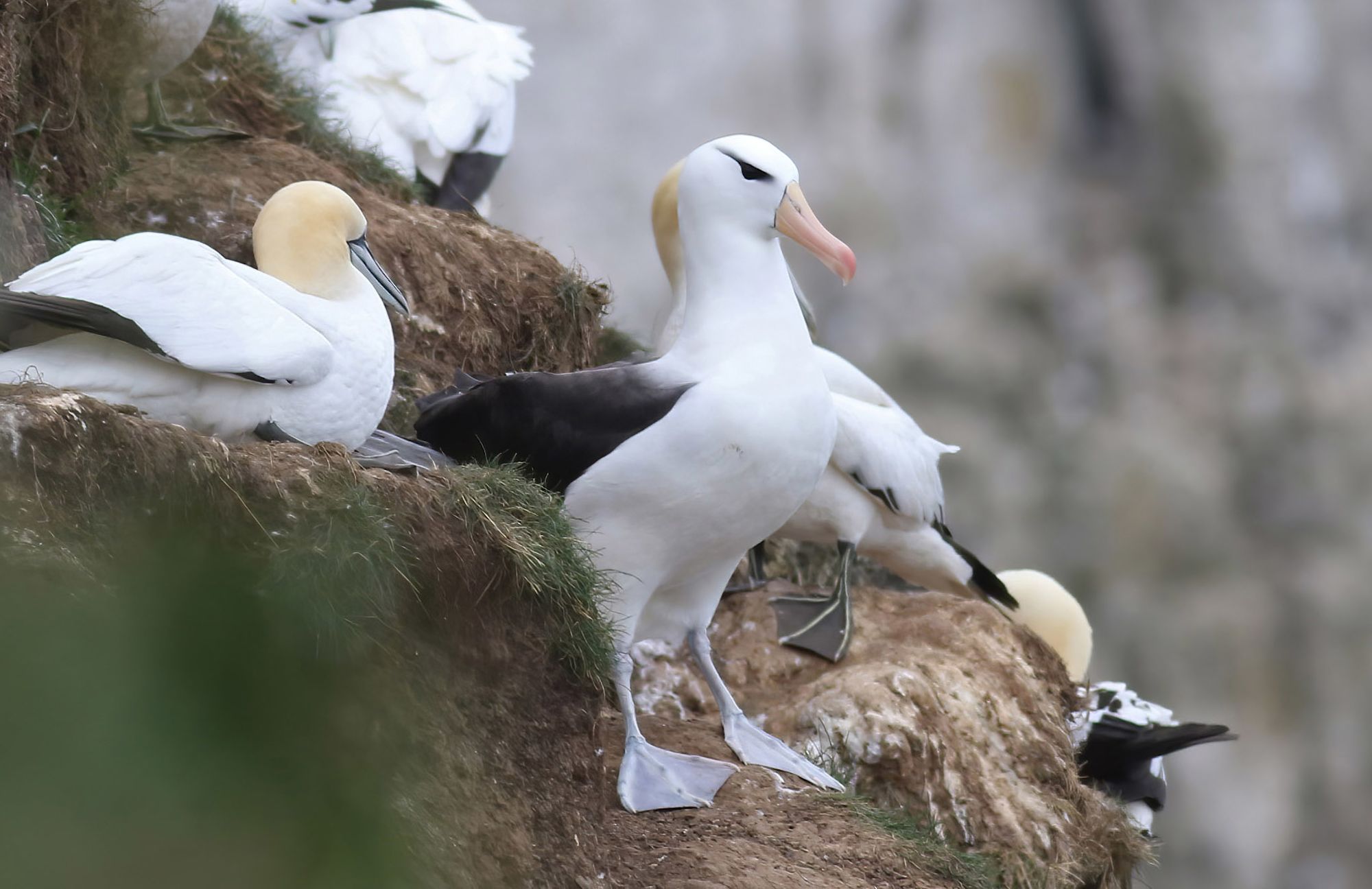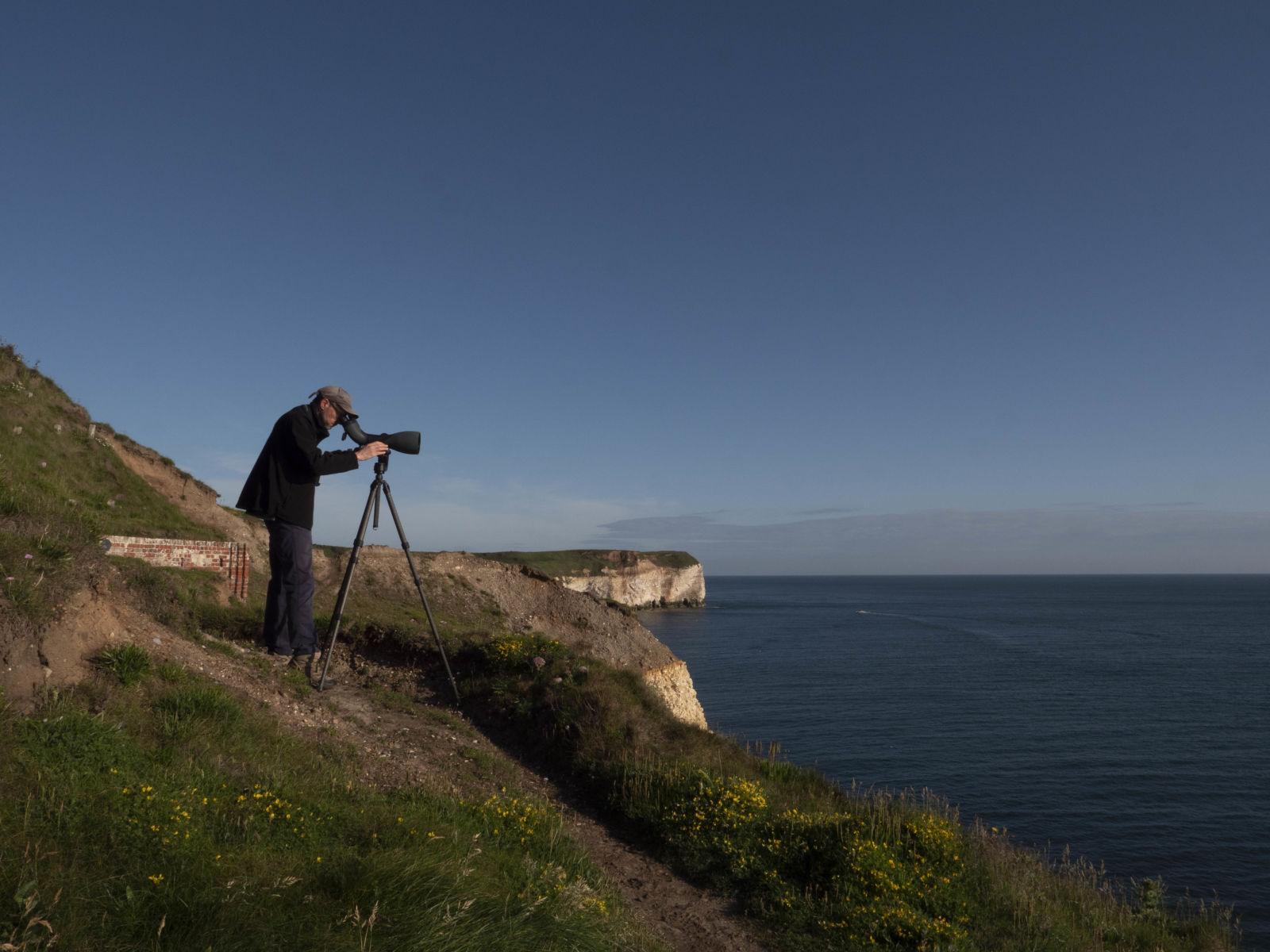Precipitous 100 meter high chalk cliffs on the north side of Flamborough provide a summer home to an internationally important seabird colony. A total of 60,500 pairs of Guillemots, 45,500 pairs of Kittiwakes, 20,000 pairs of Razorbills, 13,500 pairs of Gannets and several thousand Puffins are all breeding here. The sheer spectacle of myriad seabirds wheeling in flight against a backdrop of huge white cliffs is an unforgettable experience.
Monitoring breeding productivity is not easy when the observer is perched on the cliff top. The use of a telescope is vital when carefully checking the shaded crevices within the cliff face to locate Puffins and Razorbills in particular.


... really comes into its own here, with its extremely high resolution providing detail beyond the capacity of other scopes.
A LOST OPPORTUNITY
Of course, any place on Flamborough will attract rarities and Bempton is no exception. In October 2016, an Eastern Crowned Warbler from eastern Asia was discovered in cliff top bushes. On its second day, hundreds of birders watching the warbler suddenly started to run to the cliff top. Why? Because a Black-browed Albatross was flying south close inshore, allowing a great many to enjoy seeing two birds originating from completely different places on the planet.

Unfortunately, although I knew the albatross was on its way to Flamborough early on, I was trapped on a train of London-bound commuters feeling utterly helpless. My experience of this exciting event was phoning friends from a train to warn them an albatross was heading their way. Whilst pleased for them, I was crushed at the time!
A NEW CHANCE: BLACK-BROWED ALBATROSS SPOTTED AT BEMPTON!
Fast forward to 2nd July 2020. I was working from home when I received a message – Black-browed Albatross north at Bempton. I grabbed my binoculars, my spotting scope and the new 115-mm objective module and was on the cliff top viewing platform within ten minutes. Suddenly the albatross was spotted sitting on the cliffs amongst a group of 30 non-breeding Gannets – cue pandemonium!


As the bird was 250m away, I gambled upon finding an angle to watch the albatross at closer range. A quick sprint along the cliff top and I found myself staring at six Gannets. I was just about to move on, when I realised I could see seven pairs of feet – clearly a bird was obscured and two feet were huge and pale grey. Two Gannets then took off into the air, leaving me staring eyeball to eyeball with an adult Black-browed Albatross.


I can still feel that adrenalin rush as I captured a few images of a unique moment. A memory of a lifetime and one that will fuel me getting up at dawn to go birding in all weathers.
About the author Craig Thomas:
Craig Thomas is a conservationist and birder from the UK. He is Chair of the Flamborough Bird Observatory on the Yorkshire coast of England, where he engages with locals and visitors in order to enhance Flamborough’s biodiversity. Nature is where Craig “recharges his batteries”. For general birding, he relies on his ATX 65-mm spotting scope. “I love the latter telescope as it gives flexibility with its modular design. I can take the 65-mm objective module abroad in my travel luggage, whilst being able to change it for the new 115-mm objective module for seawatching in the UK.















